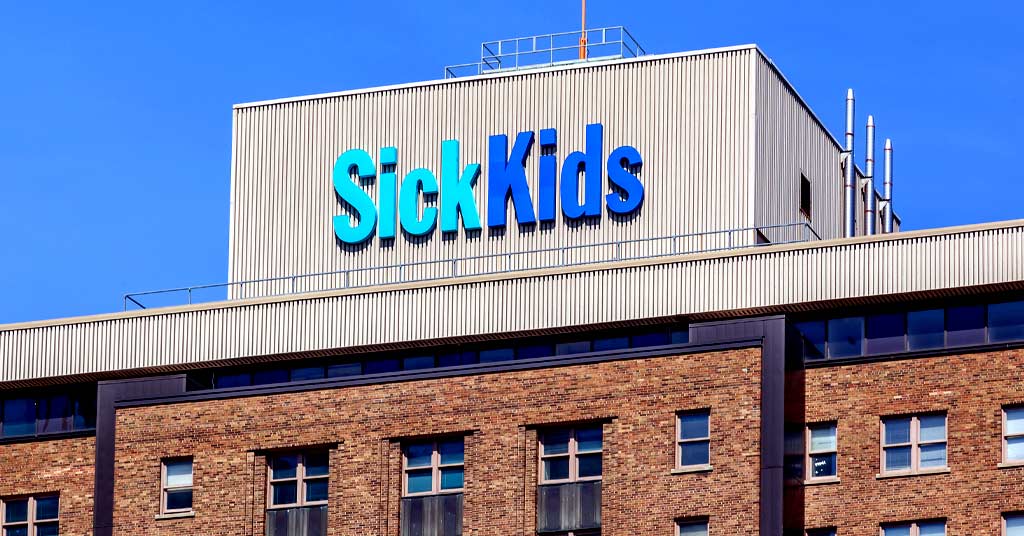
Ontario Hospitals Looking to Cut Staff Costs, Speed Up Work Despite Ongoing Staffing Crisis
Ontario Nurses Association says it is ‘shocked’ the cost-savings system is still in use during ‘the worst health-care staffing crisis in Ontario’
Despite the pandemic and a severe staffing crisis, hospitals across Ontario are continuing to use a controversial cost-saving, “just-in-time,” systems that were originally pioneered by assembly lines at Toyota’s automotive plants to find ways to cut costs on staffing and operations.
Since early 2020, Ontario’s hospitals have lurched from crisis to crisis. Emergency Departments have been overwhelmed, nurse-patient-ratios have risen to a shocking 1:8, nurses and physicians have burned out and whole wards have had to close.
However, according to a new analysis of Ontario hospital human resources policies by PressProgress, many hospitals in the province say they still use the “Lean” system despite criticism from health workers and academic literature highlighting “negative” effects of the approach.
Modeled after a system designed to find efficiencies on the “factory floor” of Toyota’s assembly lines, so-called “Lean” policies aim to save money and speed up the pace of work using timing schemes, scorecards, audits of material costs and other HR policies.
Lean systems have been implemented in hospitals around the world, including the United States and United Kingdom, purporting to “decrease costs and waste.”
However, international studies have repeatedly raised concerns about Lean. The British Medical Journal has noted surveys show the approach is “detrimental to patient care” while a 2016 report in the International Journal for Quality in Health Care found a “statistically significant negative effect of Lean” across every indicator:
“15 outcomes were reviewed. All 15 outcomes reported a statistically significant negative effect of Lean on nurse engagement, usefulness, patient care, time for patient care, workplace issues, availability of supplies, workload, stress and patient safety.”
In Saskatchewan, Lean attracted controversy after hospital managers followed nurses around wards with stopwatches and filled out “time observation forms” to track every movement – from turning around (max 1 second) to checking supply rooms (max 3 seconds).
In 2009, the Ontario Hospital Association – in collaboration with consultants like KPMG, MoreSteam and the Leading Edge Group – began offering Ontario hospital managers online courses in “Lean Healthcare” – specifically, according to its brochure, it covered: “How to lead an organization so it meets its fiscal constraints.”
LeadingEdge’s 2014 brochure, alongside testimonies from key Canadian healthcare executives, invited other facilities to “be part of the Lean Revolution.”
It boasted further: “Over the past 5 years the average savings from Black Belt projects is in excess of $1.7m per student.” Future students, it promised, can help Ontario’s hospitals excel in “cost savings/avoidance.”
Starting with Toronto’s University Health Network, North York General Hospital and Windsor’s Hotel-Dieu Grace, a 2017 3M report notes, the program was embraced by other facilities, as well as the Ontario government.
Caricaturing Lean’s origins in Japanese factories, the OHA offered Ontario hospital managers “white belts,” “yellow belts” and “black belts,” in healthcare cost-cutting.
However, the OHA recently stopped offering the training workshops.
Asked if it had walked the program back, an OHA spokesperson told PressProgress it “evolved away from direct skills-based training and towards advancing leadership development within the hospital system.”
OHA added it is “not encouraging members to use any specific Lean health care programs.”
Angela Preocanin, Vice-President of the Ontario Nurses Association, said Lean is a cost-cutting measure that is highly inappropriate for hospitals.
“Lean management is a money-savings and standardization-concept that is used in major for-profit industries and manufacturing plants across the globe, such as Toyota, Nike and John Deere,” Preocanin told PressProgress. “These corporations use Lean to find efficiencies in their work assembly and production lines.”
“The Ontario Nurses’ Association is adamant that Lean should never be used in any health-care facility. Our patients are individuals who have specific care needs and require tailored treatment plans, and Lean principles do not apply to the care of human beings.”
According to hospital administrators contacted by PressProgress, many hospitals across Ontario say they are still using Lean to track the productivity of health workers.
Toronto’s Hospital for Sick Children, which recently made national headlines after a devastating surge of COVID-19 and RSV left the hospital with “no choice” but to airlift patients, extend wait times and reduce surgeries, counts itself as one hospital that uses Lean.
A spokesperson for SickKids told PressProgress that the hospital “deployed a customized Lean Management System known as the ‘Daily Continuous Improvement Program (DailyCIP)’ to over 60 clinical and non-clinical teams across the organization.”
Devised in 2013 by ThedaCare in Appleton, Wisconsin, an article provided by SickKids explains, after a visit by VP Jeff Mainland. In an interview with KPMG, Mainland boasted that the system has helped him “reduce” the quantity of materials used.
Via a system of daily assessments, a leaked HR powerpoint notes, SickKids’ partnership with ThedaCare aimed to help it eliminate “waste.”
“Our dedicated Process Improvement team offers two levels of Lean training for SickKids staff,” the spokesperson added, “coaching is done in-house by members of the Process Improvement team.” These “coaches,” the spokesperson said, are trained in Lean processes and are designated “Six-Sigma Master Black Belts.”
In nearby Mississauga, paramedics across the Trillium Health Network reported that EDs were so crowded, they could not meet standard “critical response times.” The THP directed patients to either visit family doctors, walk-in clinics and other facilities amid serious “capacity pressures” in hospital wards.
Meanwhile, despite facing these “capacity pressures,” the HR department Trillium was tasked with finding new ways to cut costs. A spokesperson for Trillium told PressProgress:
“A number of staff at Trillium Health Partners (THP) are trained in Lean methodology and work in various departments across the hospital. Lean skills and associated tools are applied as part of our ongoing improvement activities and projects across our hospital and departments, including Human Resources.”
Outside the GTA, Thunder Bay Health Sciences confirmed to PressProgress that “Lean is integrated into our operations and practices” and that it uses Lean to identify “efficiencies.” TBHS’ HR team “leads the monitoring of performance indicators and benchmarks.”
Meanwhile, a spokesperson for Hamilton Health Sciences said it also uses “Lean management.”
“While the pandemic, and historical staffing and capacity pressures are a persistent challenge, we are proud of the ongoing improvement work by our team which has been supported by the (‘Continuous Quality Improvement’) methodology,” an HHS spokesperson told PressProgress. “We monitor our reliability on expected standards for CQI on a regular basis and have processes to respond to items needing additional support.”
In Eastern Ontario, a spokesperson for Pembroke Regional Hospital told PressProgress “we have adopted Lean management ways of doing things and these are now embedded in our culture at PRH.”
Unions representing Ontario health workers say the continued use of Lean is “shocking” given the pressures facing Ontario hospitals in recent years.
“ONA is shocked that Lean management practices continue to be used during the worst healthcare staffing crisis in Ontario. Ontario’s hospitals and the Ontario government cannot continue as if it is business as usual with austerity measures in place,” Preocanin told PressProgress.
CUPE National President Mark Hancock said the system will only make the health system crisis worse.
“The Lean methodology is deeply troubling at a time of understaffing and staffing crises in so many areas of health care,” Hancock told PressProgress.
“Asking HR to cut so-called ‘waste’ during an existing staffing crisis means even more understaffing, more overworked staff leaving because of burnout, more overcrowded hospitals, and even longer wait times.”
Our journalism is powered by readers like you.
We’re an award-winning non-profit news organization that covers topics like social and economic inequality, big business and labour, and right-wing extremism.
Help us build so we can bring to light stories that don’t get the attention they deserve from Canada’s big corporate media outlets.
Donate



